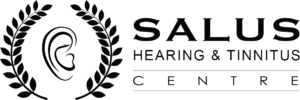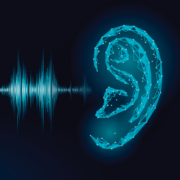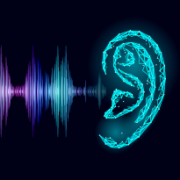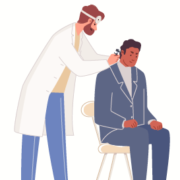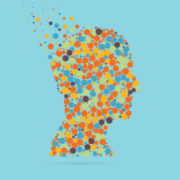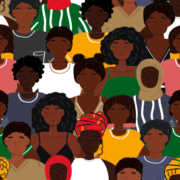Who Invented Sign Language?
From Its Origins to American Sign Language and Beyond
Humans have used hand gestures since the stars exploded and we began to exist, so the exact origins of sign language are unclear. However, the progression from early signing leading to American Sign Language (ASL) — and other sign languages used worldwide — has some definitive moments and identifiable responsible parties.
What Is ASL?
ASL has existed in the U.S. and parts of Canada for more than 200 years. It’s considered a formal language and, as with any language, it has many variations and dialects all over.
Just as when you travel from English-speaking city to English-speaking city, inflections change, and locals tend to use different words and phrases more regularly than in other parts of the same country.
It’s the same with sign language. On ASL’s ever-evolving nature, the American Speech-Language-Hearing Association reports that, “ASL linguistics has evolved as a specific research discipline that is the object of systematic study in graduate courses and doctoral programs in universities throughout the United States and Canada.”
The Origins of Sign Language
The history of sign language dates back centuries, with evidence of various forms of sign communication found in ancient civilizations. Hard-of-hearing and deaf individuals have always had a need to communicate. Necessity — the reputed mother of invention — led to the development of early sign languages.
Would it surprise you to know that the majority of documented origins of ASL are French? While American Sign Language is only traced back to the early 1800s, French Sign Language (LSF) has been documented 100 years prior to that, and other forms are less formally documented even earlier!
Contributions of Early Educators
In the 1500s, Spanish Benedictine monk Pedro Ponce de Leon used signs to help educate Spanish students who could not hear. He is believed to have been the first person to develop a method for teaching hard-of-hearing and deaf individuals. Sadly, his methods — whether never recorded or lost — have disappeared to the tides of history. However, in the 1700s, the first formal sign language was developed in France.
One prominent figure in this field was Abbé Charles-Michel de L’Epée, a French Catholic priest turned educator who developed a sign system called Old French Sign Language (VLSF — vielles langue des signes française) to communicate with his deaf students.
ASL historian William Stokoe documented that, in 1780, L’Epée taught two sisters who couldn’t speak or hear. He couldn’t teach them religion if they couldn’t understand him, so he then dedicated his life to teaching deaf children in France and opened a school.
Stokoe went on to sing L’Epée’s praises, saying that others, “… had paraded their successes while making a mystery of their methods, L’Epée gave his life, his considerable private fortune, and his genius to a school which, in theory at least, was open to every child born deaf in France, or in all of Europe.”
Author and ASL educator, Michelle Jay, says of L’Epée’s school for the deaf, “Deaf children came from all across France to attend the school. The deaf children had signed at home then brought these signs with them to the school.” L’Epée was a collector and organizer of these home-grown signs and attempted to homogenize them.
A report from Vassar College explains, “L’Epée then set out to do what no one else had — learn from deaf people so that he could teach them.”
Ultimately, L’Epée’s studying and recording efforts of their personal sign systems — and the fruit of the collaboration with the deaf children of France at that time — laid the foundation for future sign languages.
How did sign language come to America?
Esteemed ASL historian James Woodward said that most educators claim ASL was born when “T.H. Gallaudet and L. Clerc brought French Sign Language to the United States.” He questions that theory by adding, “This seems a very unsatisfactory explanation.” Although all agree ASL is definitely French in origin, Woodward hints that solely crediting Gallaudet and Clerc may not be sufficient.
You may recognize the name “Gallaudet” from the famous university in Washington D.C. It’s the only university in the U.S. dedicated to the education of the Deaf. It was founded in 1864 and is still educating students to this day.
Gallaudet University claims, “Our story began in 1816 when Laurent Clerc and Thomas Hopkins Gallaudet crossed the Atlantic from Paris, France, to the United States with a dream to open the country’s first school for deaf education. Then, in 1864, with the support of Congress and President Abraham Lincoln, they extended their vision by founding Gallaudet University.”
A romantic story, but is it the full explanation? Should Clerc and Gallaudet receive all of the credit? Who were their teachers?
Putting the Pieces Together
Connecting the dots is how we connect the origin story with the modern tale — Deaf studies expert Michelle Jay helps us out here. “Abbe Sicard was Abbe de L’Epée’s successor,” Jay says. “Laurent Clerc and Jean Massieu were once Sicard’s students and became accomplished deaf educators. Gallaudet studied the teaching methods of these instructors and even took private lessons with Clerc, who was one of the best teachers at the institute.”
Thomas Hopkins Gallaudet was an American looking for a way to help his hard-of-hearing and deaf neighbors communicate. He traveled to investigate a school for the Deaf in England, where he met Abbe Sicard, visiting from Paris. Through Sicard, Gallaudet met Laurent Clerc. When Gallaudet was getting ready to travel back to America, he asked Clerc to accompany him.
According to Gallaudet University, “On the way back, Clerc taught Thomas Sign language and Thomas taught Clerc English, and together they established the American School for the Deaf in 1817. Laurent Clerc became the first deaf teacher of deaf students in the United States.”
Hartford, Connecticut, was the site of this huge leap forward for ASL. When this first permanent school for the Deaf was established, ASL emerged as a distinct sign language. It combined elements of LSF, Indigenous sign languages, and the diverse linguistic backgrounds of its users. ASL quickly spread across the U.S. and became a vital part of American, and eventually Canadian, culture.
Other Sign Languages:
- Quebec Sign Language (LSQ: Langue des Signes Quebecoise): LSQ is the predominant sign language of Deaf communities used in Francophone Canada, primarily in Quebec.
- French Sign Language (LSF: Langue des Signes Française): With over 100,000 users worldwide, LSF is used predominantly in France and Switzerland.
- British Sign Language (BSL): BSL is used by the Deaf community in the United Kingdom and is recognized as an official language. It was developed independently from ASL and has its own grammatical structure and vocabulary.
- Australian Sign Language (Auslan): Used in Australia, Auslan has its roots in BSL but has developed into a unique language over time. In fact, it is a language unique to Australia. Auslan has its own grammar and vocabulary and does not follow English sentence structure. Much of Auslan often does not have direct English equivalents and vice versa. It has undergone some standardization and is used in education, the media, and everyday communication.
- Japanese Sign Language (JSL: 日本手話): JSL is the primary sign language used in Japan. It has influenced other sign languages in East Asia and has its own grammatical structure and vocabulary. Just as Japanese is completely different from English, JSL is completely different from ASL. While ASL uses some mouth movements, JSL uses mouthing extensively to distinguish between various signs.
- Chinese Sign Language (CSL): China has several regional sign languages, collectively referred to as CSL. Differing significantly, these sign languages are not mutually understood.
- Mexican Sign Language (LSM): LSM is the sign language used in Mexico and is derived from ASL. However, it has evolved independently and developed distinct features unique to Mexican Deaf culture.
- International Sign Language (ISL): ISL is a system designed for international communication among deaf individuals. ISL is a combination of signs from different sign languages and is not a complete language. It allows individuals from various places in the world to communicate effectively.
The diversity of sign languages around the globe is really something to celebrate!
Sign language has a fascinating history, and the efforts of pioneering educators for the formation of ASL, and other sign languages, clearly have had an enormously lasting impact on the world. When the playing field is leveled, and everyone can communicate, we humans have a better chance of understanding one another in every way.
Sources:
American Speech-Language-Hearing Association – Ad Hoc Committee to Establish a Position on American Sign Language (ASL) https://www.asha.org/policy/ps2019-00354/ Accessed 8/1/23.
https://www.britannica.com/biography/Pedro-Ponce-de-Leon Accessed 8/1/23.
Stokoe, W. Journal of Deaf Studies and Deaf Education vol.10 no. 1. Oxford University Press 2005. https://academic.oup.com/jdsde/article/10/1/3/361306 Accessed 8/1/23.
Jay, M. Don’t Just Sign, Communicate! A Student’s Guide to ASL and the Deaf Community. Los Angeles, CA, Judea Media, 2011. “Start ASL” https://www.startasl.com/abbe-de-lepee/ Accessed 8/1/23.
Historical bases of Sign Language: 1978 James Woodward, Gallaudet College
http://www.cslds.org/v4/resources/InternalAdmin/publicationB/16/_Woodward_1978_HistoricalBasesOfASL_.pdf Accessed 8/1/23.
Gallaudet University https://gallaudet.edu/about/ Accessed 8/1/23.
